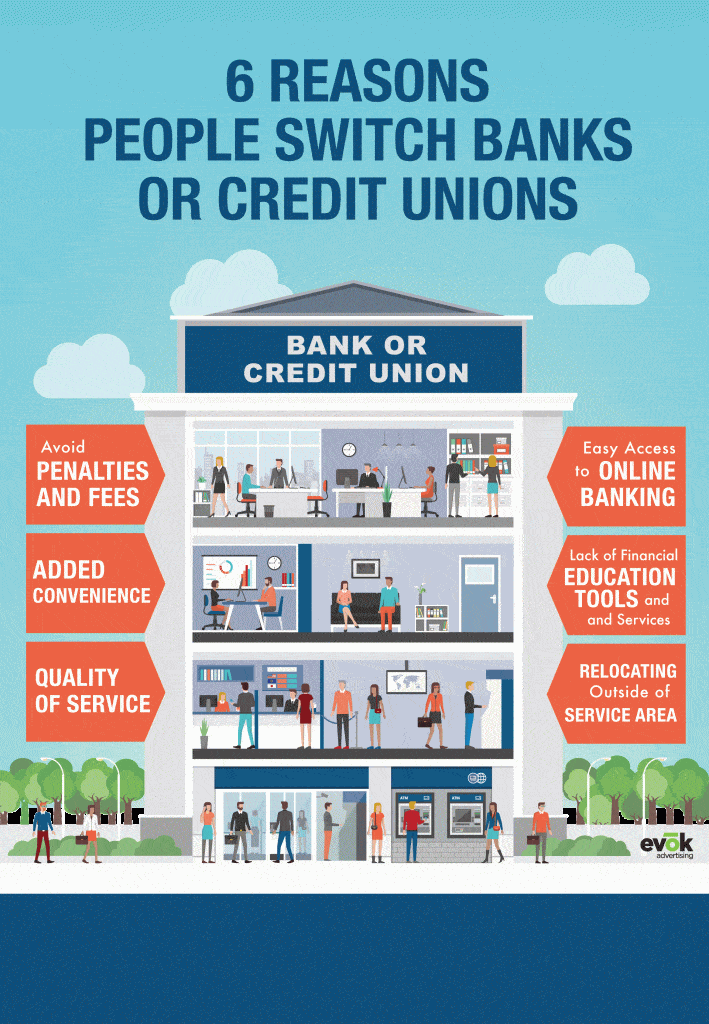
4 Steps to Earning Customer Loyalty with a Relationship Banking Strategy

How Relationship Banking Helps Reduce Customer Attrition
If another financial institution offered your customers or members a better deal, would they take it? According to a recent survey, 43% of bank customers would be quite or very likely to switch from their current bank. While poor service is ranked number one for reasons why customers leave their banks, over half of customers said their decision could have been swayed if their institution had made an effort to keep their business.
Customer loyalty has long been a point of pride for the financial industry, with the average American keeping a checking account for 16 years. But a widening world and shifting consumer preferences threaten to disturb that status quo. This threat is particularly applicable for institutions focusing on products and sales, rather than understanding customer needs, earning trust and strengthening relationships.
How Relationship Banking Wins Over a Transactional Approach
Historically, banks have operated under a transactional approach—product-centric and sales-focused. Shifting the focus to providing value versus simply increasing products-per-customer, relationship banking takes a benefit-driven approach to service. This long-term strategy aims to get to know what customers or members really need to strengthen the bonds between you and those you serve.
By creating a partnership with customers, you’re fostering a feeling of dependability, consistency and trustworthiness. Relationship banking inspires customers to view your institution as a one-stop shop for whatever they need, when they need it―whether that’s a mortgage, auto loan or interest-bearing savings account.
“Experience has taught us that keeping existing customers or members satisfied is just as, if not more, important to overall success as signing on new ones,” Cheryl Parker weighs in, evok’s director of client services. “Relationship banking, and the idea of truly getting to know what your customers need from your institution, works to extend the connection between customer and bank or member and credit union beyond transactional to a mutually beneficial partnership between equals.”
Marketing Relationship Banking to Current Customers and Members
Start with your “why”
In tackling any challenge leading to significant change, we must look inwards before taking action. Whether it’s coming up with a game plan to finally kick that bad habit or a shift in long-standing internal processes, getting to the “why”—the real reason you’re embarking on this journey—helps define your mission with more clarity and improve your chances of success.
For financial institutions shifting from transactional to relationship banking, this introspection calls for a fresh look at brand pillars, including values, mission and positioning, as well as internal processes. Does your messaging align with your vision? Or does the pressure to meet sales quota place products sold over customers’ real needs? If there is a disconnect, it may be time to reevaluate and redefine your brand, starting with your employees.
Embody relationship banking from the inside out
Your institution’s employees are the vehicles for delivering your brand’s promise to customers or members. To truly embody the spirit of relationship banking, you’ll need their support and determination. But first, you’ll need to ensure they are fully immersed in your brand, your mission and your goal to earn your customers’ loyalty with personalized service.
Internal rollout of updated brand elements is about more than introducing a new identity—it’s about getting your staff reacquainted with what’s unique about your institution. Whether it’s through a brand manifesto video, like the one we produced for Pita Pit following a brand and positioning refresh, or a suite of rollout materials, bringing your employees on board should be equal parts educating and exciting.
Develop audience personas
Relationship banking is defined by matching customers with the right products for them—a personalized cross-selling strategy. And while there is no shortcut to getting to know customers better, you can develop audience personas to act as guidelines for more personalized marketing.
Audience personas are structured as profiles of individuals, but are meant to represent larger audience segments with shared qualities—Sarah the college student, Luke the recent homeowner, Emily and Joel the newlyweds, etc. These personas dig into the attitude, behavior and motivation of your primary targets based on data from real customers. They also outline preferences and interests, including which products and services would be most applicable for them at their current life stage.
These personas can be applied when marketing specific products and services to ensure the message matches the audience. However, for personalized marketing to be a possibility, segmentation must first take place.
Segment your marketing
To connect with today’s consumers, personalization is the name of the game. Whether they’re choosing what to watch next on Netflix or the best rewards-earning credit card, customers are looking for recommendations based on their history, preferences and specific needs. This one-size-doesn’t-fit-all approach calls for institutions to take on an advisory role for each member or customer.
Developing personas is the first step in delivering personalized marketing, but segmentation is what makes this strategy plausible.
Segmenting your audiences according to your brand’s personas allows you to tailor marketing depending on who is on the receiving end. And while your personas act as a great starting point for creating those groups, the ways you can segment your audiences don’t end there. Consider segmenting your audience based on recent products used or accounts opened, transactions during in-branch visits, or new products/features relevant to their needs or existing products used.
Investing in Loyalty Leads to New Customer Acquisition
The formula is simple—customer satisfaction inspires loyalty, which inspires advocacy. Because recommendations from friends remain the most credible form of advertising, inspiring existing customer advocacy is a direct investment in customer acquisition.
Relationship banking, which focuses on delivering relevance and value for customers or members, is the key to increasing satisfaction and building ongoing partnerships with those you provide services for. It all comes full circle to define a long-term, growth-driven strategy for banks, credit unions and other financial institutions.
